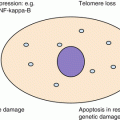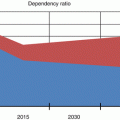© The Editor(s) 2018
Balakrishnan Kichu R. Nair (ed.)Geriatric Medicinehttps://doi.org/10.1007/978-981-10-3253-0_1313. Rehabilitation for the Older Patient
(1)
Lingard Private Hospital, Merewether, NSW, Australia
Key Points
Functional assessments and outcome measures are important in rehabilitation.
Interdisciplinary team approach is the key to success.
Patient-centred goals are important to aim for.
Discharge planning should start early.
Integration into community and continued care after the rehabilitation should be provided as necessary.
13.1 Case Study (Part 1)
Mrs. Ida Jones
Mrs. Ida Jones is an 82-year-old lady who lives with her 81-year-old husband. She has been referred by her GP and brought into the rehabilitation unit from home. Her GP is concerned about her decline in mobility after a fall 2 months ago. Since the fall Mrs. Jones has become housebound. Prior to the fall, Mrs. Jones walked with a four-wheel walker frame and enjoyed regular outings with her husband. She also enjoyed the company of her sister Vera who unfortunately died about 3 months ago. Mrs. Jones showered and dressed herself prior to the fall but is now relying on her husband for assistance.
Mrs. Jones arrived at the rehabilitation ward in a wheelchair. She reports tiredness, poor sleep, left hip and knee pain and right foot pain. She also tells you that she is frequently wanting to urinate and sometimes can be incontinent. This is also new for her. Finally, she reports a persistent dry cough in the last few weeks.
13.1.1 Past Medical and Surgical History
Congestive cardiac failure
Atrial fibrillation
Permanent pacemaker
Hypertension
Gastro-oesophageal reflux disease
Depression
Osteoarthritis
Osteoporosis
Lower back pain
Fractured right neck of humerus 2014. Nonoperative management
Hay fever
Macular degeneration
13.1.2 Medications
Warfarin 2 mg nocte
Bumetanide 1 mg mane
Cyproheptadine 4 mg nocte
Venlafaxine XR 37.5 mg mane
Perindopril 5 mg nocte
Acetaminophen 1 g tds
Esomeprazole 40 mg nocte
Bisoprolol 2.5 mg nocte
13.2 Case Study (Part 2)
13.2.1 Rehabilitation Assessment
13.2.1.1 Initial Assessment
The initial assessment is usually done by the physician. This assessment is aimed to look at the whole person, and after taking a thorough history and examination, it may also be necessary to speak to relevant family members and any health professionals previously involved in the patient’s care. The physician then takes a full functional history starting with premorbid level of function and then current level of function [1].
13.2.1.2 Multidisciplinary Team Assessments
Multidisciplinary care is the cornerstone of any rehabilitation program. The efficacy of coordinated care is supported by a number of studies [3, 4]. Each discipline will assess the patient independently on arrival to the rehabilitation unit and implement the appropriate assessment tools, outcome measures and management plans. Throughout the program the multidisciplinary team works together in an interdisciplinary manner.
A formal functional tool can be used such as the Barthel [12] or the FIM (functional independence measure) [6, 13]. These assessment tools are usually used within the first 72 h of the patient’s admission and used again within 72 h of discharging the patient. The FIM assessment tool is widely used across the world; it is a common method of assessing basic daily living activities and functional abilities [6]. A cognitive assessment should also be performed on all elderly patients prior to participating in a rehabilitation program [1]. Participation in therapy is dependent on the ability to follow simple one-step commands and to sufficiently recall tasks so that learning is carried over each day [2]. There are a variety of standardised assessment tools but a Mini Mental Status Exam (MMSE) is the one most commonly used. The primary determinant of one’s ability to benefit from a rehabilitation program is one’s pre-existing disability and level of function. However severe cognitive impairment is a risk factor for a poor response to any rehabilitation input [7].
Depression and anxiety is common in the older person. A standardised questionnaire, like the Geriatric Depression Scale (GDS) or the Depression Anxiety Stress Scale (DASS) [14], can be used if there are concerns about whether a patient has any form of mood disturbance, which may affect the ability to participate in a rehabilitation program.
Hearing and vision should also be assessed and corrected as much as possible [1]. Finding out when the patient last had a hearing test or saw an optometrist is a vital part of the assessment. Hearing aids and glasses are often left at home. It is important to remind elderly patients to regularly have their hearing and vision checked.
A fall injury prevention screening tool is commonly used on all patients in the rehabilitation unit.
Underlying medical problems can impact on a patient’s ability to participate and progress in a rehabilitation program; thus it is important to identify and manage these issues promptly. It is essential that underlying medical problems are identified and managed appropriately.
13.2.1.3 Goals
Each rehabilitation patient should have specific rehabilitation goals. These goals are usually patient centred and identified early in the rehabilitation process. Setting functional goals such as to improve mobility or to become independent with self-care tasks is common. The multidisciplinary team often assists the patient in identifying realistic and achievable goals. Rehabilitation therapists often use the pneumonic SMART when setting rehabilitation goals with patients.
S—Specific
M—Measurable
A—Attainable
R—Realistic
T—Timely [11]
An example of a goal is “I want to walk 50 m with my walking stick within one minute”. This goal is ideal because it is specific and it is measurable which enables the patient and the therapist to monitor their progress. Awareness of the goal provides a challenge and enables the patient to be motivated and engaged throughout the program. The goal should also be realistic so that the patient does not become dissatisfied and give up. The goal should be timely so that an endpoint is set and the patient has a clear target to work towards.
13.2.1.4 Rehabilitation Process
The multidisciplinary team usually involves the rehabilitation physician, rehabilitation nurse, physiotherapist, occupational therapist, speech therapist, social worker, dietician, psychologist and podiatrist. The rehabilitation team meets on a weekly basis in a case conference forum. In this meeting each patient is individually discussed. This allows formal coordination of the multidisciplinary plan and documentation of the discharge care plan and follow-up arrangements. The case conference is about reviewing the rehabilitation process including patient-centred goals and progress. Any medical interruptions are discussed.
Family/relative meetings are also important in order to update the patient’s family on the rehabilitation process, provide an open channel for communication and work towards an agreeable and safe discharge plan.
Review of Case: Mrs. Ida Jones
It is often beneficial with a patient like Mrs. Jones who has multiple comorbidities and new medical and rehabilitation issues to write down a problem list. For example:
New Problems
Dry cough
Fall
Reduced mobility
Housebound
Assistance with self-care
Urinary issues
Constipation
Tiredness
Constipation
Pain (left hip, left knee, right foot)
Grief and loss issues
Deconditioned
Other Concerns
Polypharmacy
Multiple comorbidities
Frailty
History of depression
Carer strain
Premorbid function
Current Function
There are many ways to record a functional history, but one of the most widely used classifications is the World Health Organization Model for the International Classification of Functioning, Disability and Health (ICF) [5, 15].
This enables the physician to compartmentalise the problems into the following categories based on body function and structure:
- 1.
Impairments
- 2.
Abilities to execute the task (activity limitations and restrictions)
- 3.
Ability to participate in life activities
The above points are based on consideration of the patient’s health condition including environmental and personal factors.
For example, in the case of Mrs. Ida Jones:
- 1.
Impairments
Tiredness and weakness
Urinary urgency
Constipation
Joint pain including left hip, left knee and right foot
Falls
Mood disorder
- 2.
Activity limitations and restrictions
Reduced mobility (requires a frame for short distances and a wheelchair for longer distances)
Requires assistance for self-care tasks (showering, dressing, toileting)
- 3.
Participation in life activities
Housebound
Reduced number of outings with husband
Loss of sister—no longer visiting each other
Rehabilitation Assessment Tools on Admission
Functional Independence Measure (FIM) [15]. Mrs. Jones’ admission FIM was attended to by the multidisciplinary team.
Self-care recorded by occupational therapist:






